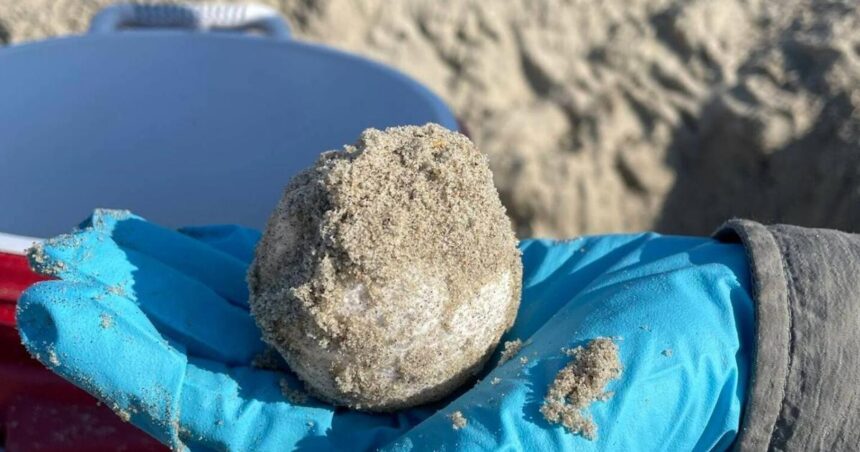In a doubly rare discovery, eggs from large, jellyfish-eating sea creatures were found on an Outer Banks beach in North Carolina.
One nest is uncommon enough, but for the first time since recordkeeping began, two leatherback sea turtle nests have been found in the same season on Cape Hatteras National Seashore, the park said July 1.
In the last 20 years, only a handful of leatherback turtles have laid eggs at the national seashore, which is “at the extreme northern limit for nesting,” according to the park. Last year, one leatherback nested at the beach, and the eggs hatched successfully.
People are also reading…
While leatherbacks typically nest on subtropical or tropical beaches, they do make their way to the Outer Banks from time to time, according to the National Oceanic and Atmospheric Administration.
Another leatherback turtle laid a nest on a different stretch of Outer Banks beach around June 12, McClatchy News reported. Cape Lookout National Seashore photographed a female leatherback crawling back to the water after laying her nest near South Core Banks.
However, this time the eggs were found even farther north. The first nest on Cape Hatteras was spotted June 19 in Avon, and the second on June 26 on Ocracoke Island, officials said.
A photo of a Leatherback sea turtle crawl pattern on shore.
It’s possible the same female laid both nests given that they can nest roughly every 10 days, according to the park.
Wildlife experts determined one of the nests was at risk of ocean water washing over it and relocated the eggs.
The endangered leatherback sea turtles are the largest turtles in the world, averaging 750 to 1,000 pounds and 5 to 6 feet long, experts say. They have the widest habitat range among reptiles, sometimes traveling over 10,000 miles in a year and diving up to 4,000 feet deep, according to NOAA.
The national seashore shared photos of a turtle’s crawl from the ocean up to one of the nests, measuring about 5 feet across.
Leatherbacks are the only turtles that don’t have scales or a hard shell, earning their names from the rubbery texture of their backs. They also lack strong jaws to eat hard prey, so one of their favorite foods is jellyfish, according to the National Park Service.
Loggerheads are the most common turtles to nest on the seashore. This year, the park said it has documented nests from 134 loggerheads, two green turtles, two leatherbacks and one rare Kemp’s ridley.
The eggs will incubate for about 60 days before the 2- to 3-inch turtles will hatch and make their way to the ocean.




